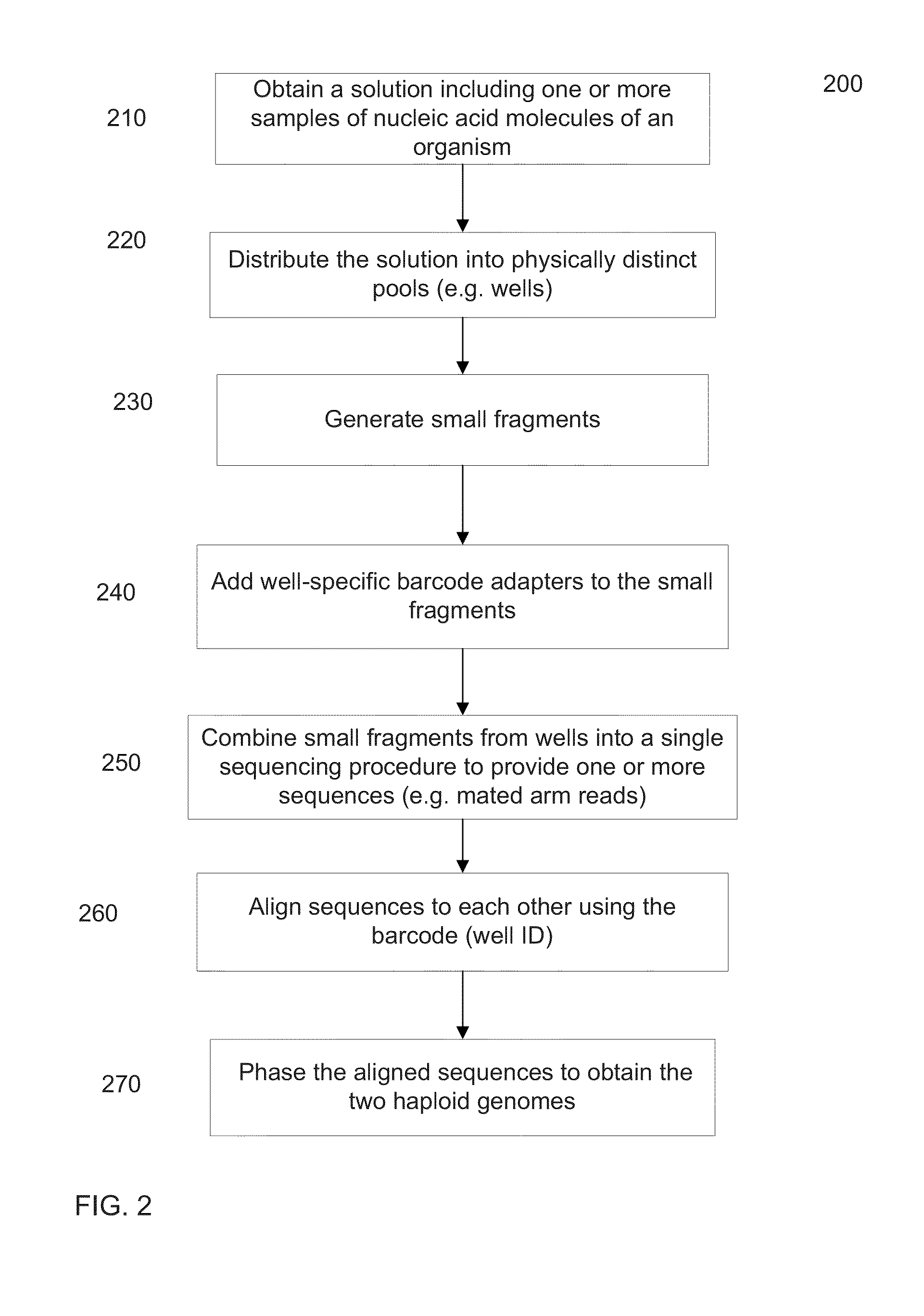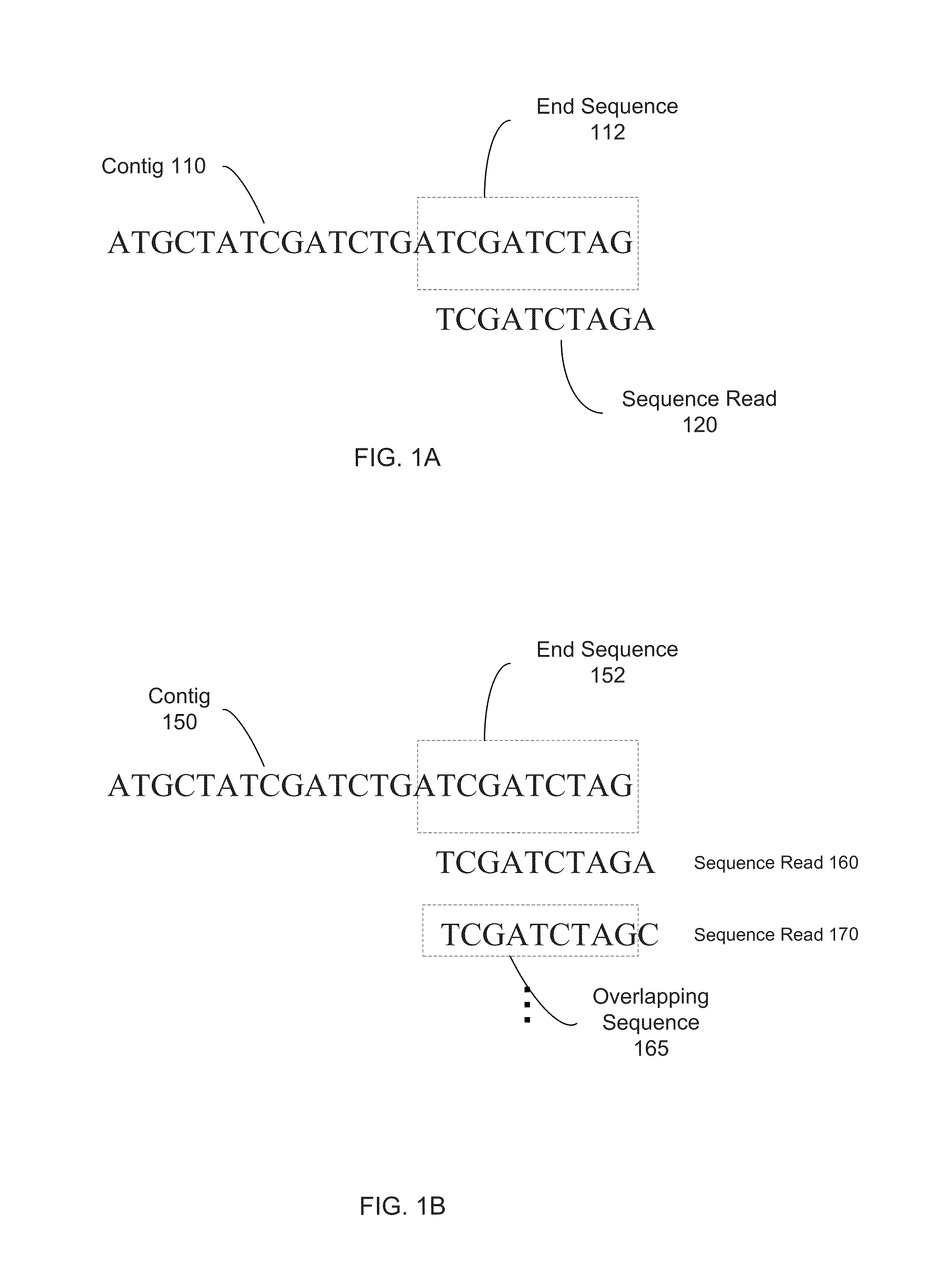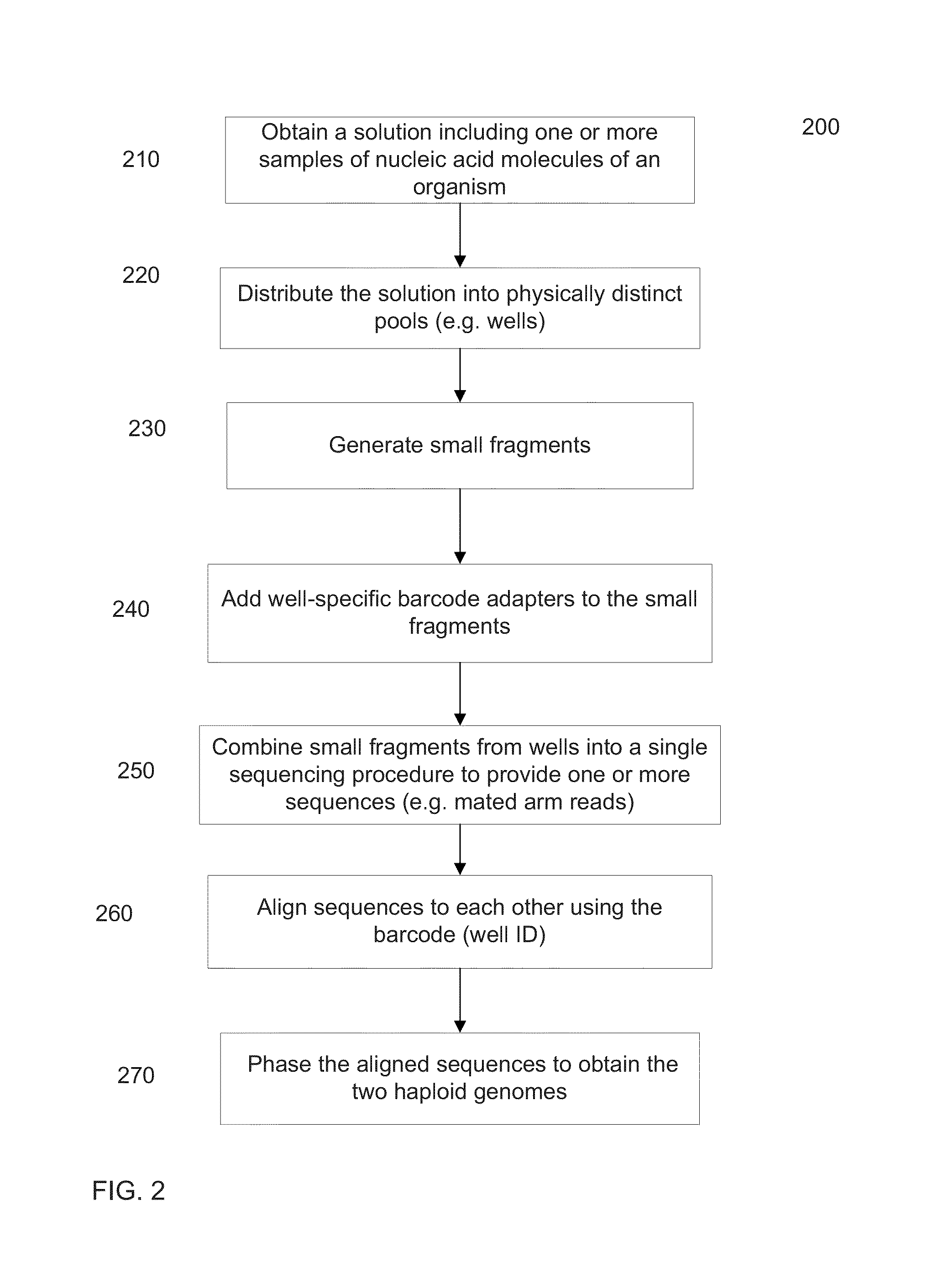Long fragment de novo assembly using short reads
a de novo assembly and short read technology, applied in the field of de novo assembly of sequence reads, can solve the problems of inaccuracy and/or time-consuming, and the technique used for local de novo assembly suffers drawbacks
- Summary
- Abstract
- Description
- Claims
- Application Information
AI Technical Summary
Benefits of technology
Problems solved by technology
Method used
Image
Examples
Embodiment Construction
[0045]De novo assembly uses information from the sequence reads to align the sequence reads to each other. Various aspects of de novo assembly are described. For example, a label can indicate an origin of the nucleic acid molecule, e.g., a well that the nucleic acid molecule is from. Nucleic acid molecules with a same label are more likely to be from a same long fragment that is being reconstructed as part of the assembly process. A contig can be built from a representative set of labels, e.g., a set determined by aligning reads to a seed.
[0046]The extension of a contig can involve a kmer index. Branches (sequence hypotheses) for extension can be chosen based on evidence of overlapping reads. Multiple levels of overlapping can be used, e.g., aligning reads to each other before selecting a branch. Kmer indexes can be created in various ways and created with various information, such information includes labels, memory addresses of reads associated with a kmer, and position in a mate ...
PUM
 Login to View More
Login to View More Abstract
Description
Claims
Application Information
 Login to View More
Login to View More - R&D
- Intellectual Property
- Life Sciences
- Materials
- Tech Scout
- Unparalleled Data Quality
- Higher Quality Content
- 60% Fewer Hallucinations
Browse by: Latest US Patents, China's latest patents, Technical Efficacy Thesaurus, Application Domain, Technology Topic, Popular Technical Reports.
© 2025 PatSnap. All rights reserved.Legal|Privacy policy|Modern Slavery Act Transparency Statement|Sitemap|About US| Contact US: help@patsnap.com



